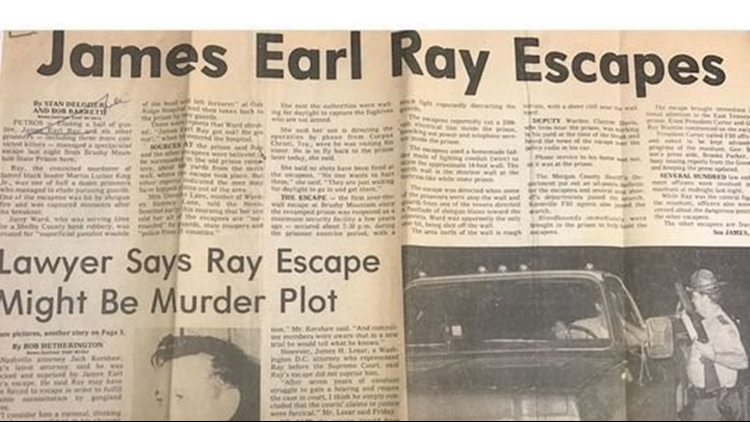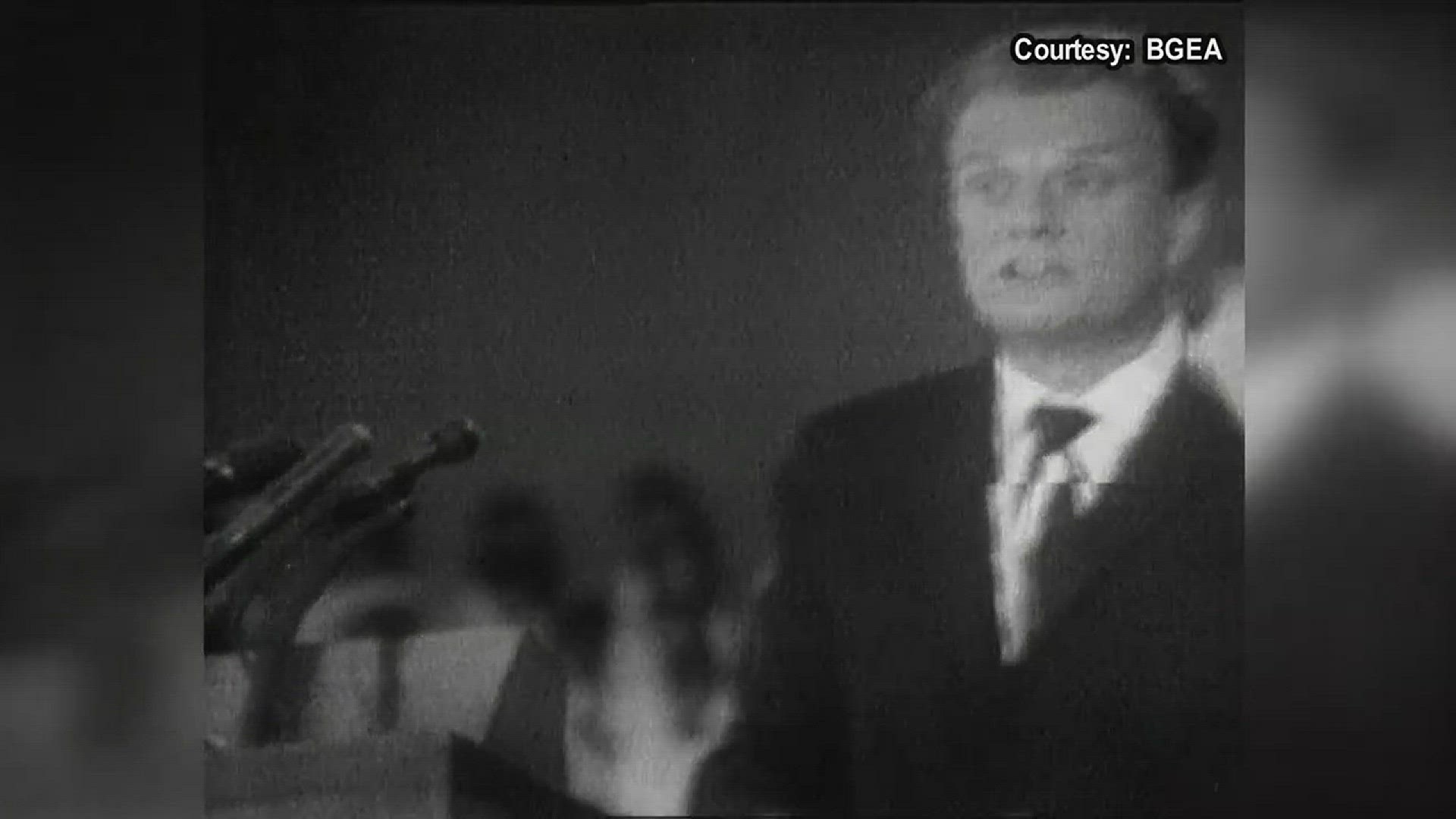PETROS, Tenn. — Anyone else might have walked right by in the dark.
The bloodhounds knew better. Sandy, the lead dog, and partner Little Red led their handlers straight up the craggy hillside to the man who lay burrowed under the half-rotten leaves, with only his head and hands protruding.
The dogs stopped. A shotgun cocked.
The man didn’t move. He barely breathed.
“Are you hurt?” one guard called out.
“No,” said James Earl Ray, soaked with sweat and covered in mud after 54 hours on the run. “I’m OK.”
Those words spelled the end of the biggest manhunt in East Tennessee history. Guards marched the convicted killer of civil-rights icon Martin Luther King Jr. out of this mountain holler, past rows of news cameras to the stone walls of Tennessee’s most notorious maximum-security prison. Sandy and Little Red trotted home to a handful of treats and a hard-earned rest.

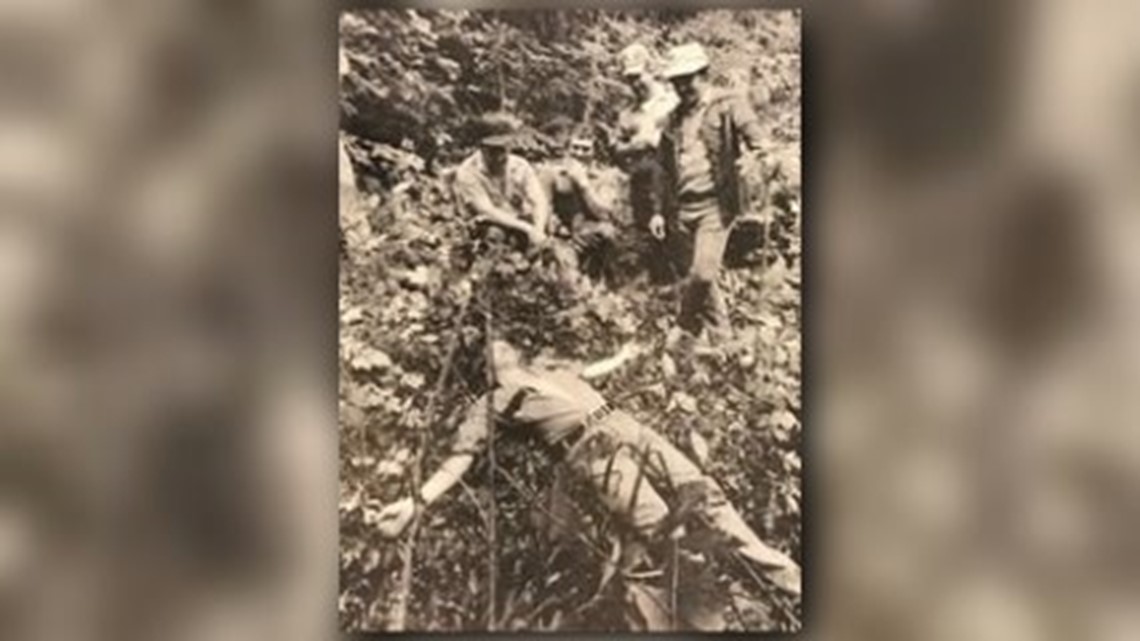
Men and women nationwide still remember the moment they learned of King’s assassination in Memphis, 50 years ago next month. And in Morgan County, old-timers still talk about the two-and-a-half days that turned the country’s eyes on Brushy Mountain State Prison when Ray and six other inmates escaped in the summer of 1977.
Ray Tucker, then the prison’s recreation director, heard the steam whistles blow the night the men escaped – once for each man out.
“We all knew what that meant,” he recalled. “And we knew we’d get no sleep till it was over.”
Pursuers swarmed the mountains by the hundreds in the two-and-a-half days that followed, and more men have claimed in the years since to be the one who caught Ray than could have fit inside the prison yard.

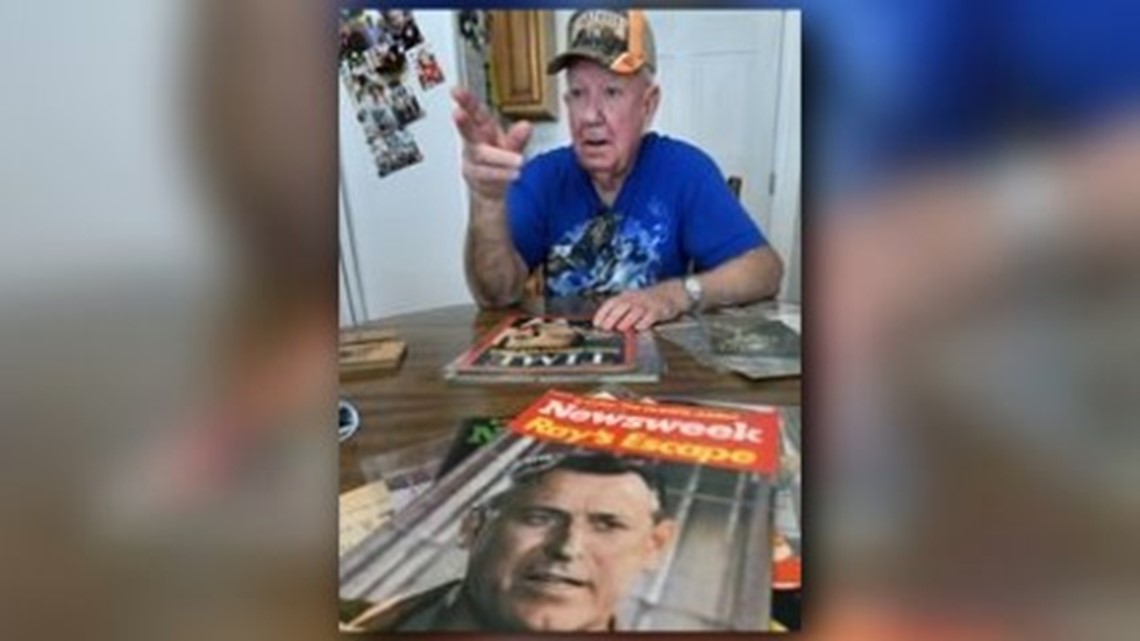
Johnny Newberry held Little Red’s leash as the dogs sniffed out the wanted man. Now 85, he still laughs when he remembers the hounds that did what the men with badges couldn’t.
“If they’d left it to us and the dogs, we could have had him the first night,” he said.
‘Just another prisoner’
The whole world knew his name the day he arrived.
James Earl Ray walked through the gates of Brushy Mountain for the first time March 21, 1970, one year into a 99-year sentence and not quite two years since the death of King, gunned down by a single shot from a .30-06 deer rifle on the balcony of the Lorraine Motel in Memphis.

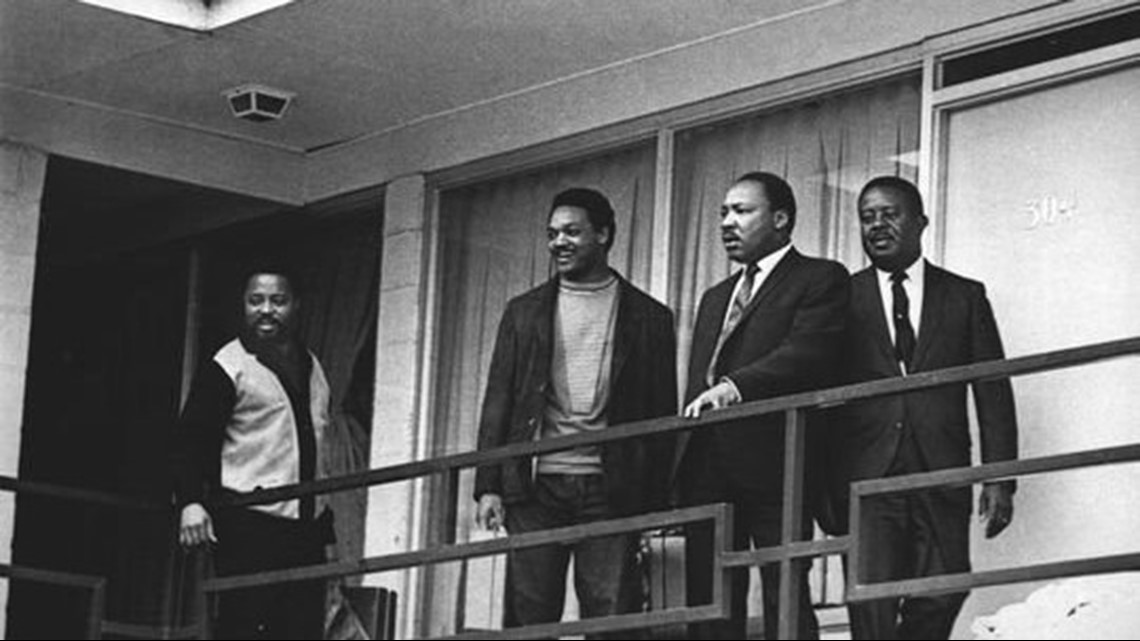
The international manhunt for King’s shooter spanned the Atlantic, ending with Ray’s arrest at Heathrow Airport in London and his guilty plea in a Shelby County courtroom in West Tennessee in March 1969 - the one and only time he ever admitted to the crime publicly. Ray spent the rest of his life trying to renege on that plea, going through lawyers like Kleenex and insisting he’d been badgered, threatened, intimidated and harassed into taking the blame for a crime he didn’t commit.
Ray learned the ins and outs of prison life years before as a small-time criminal in Missouri, where he’d escaped from prison twice already in the years before King’s death. To the outside world, he spun all manner of stories – of conspiracies and international intrigue, of guns, smuggled cash and a mysterious handler named “Raoul.” Inside the prison walls, he mostly kept his mouth shut.

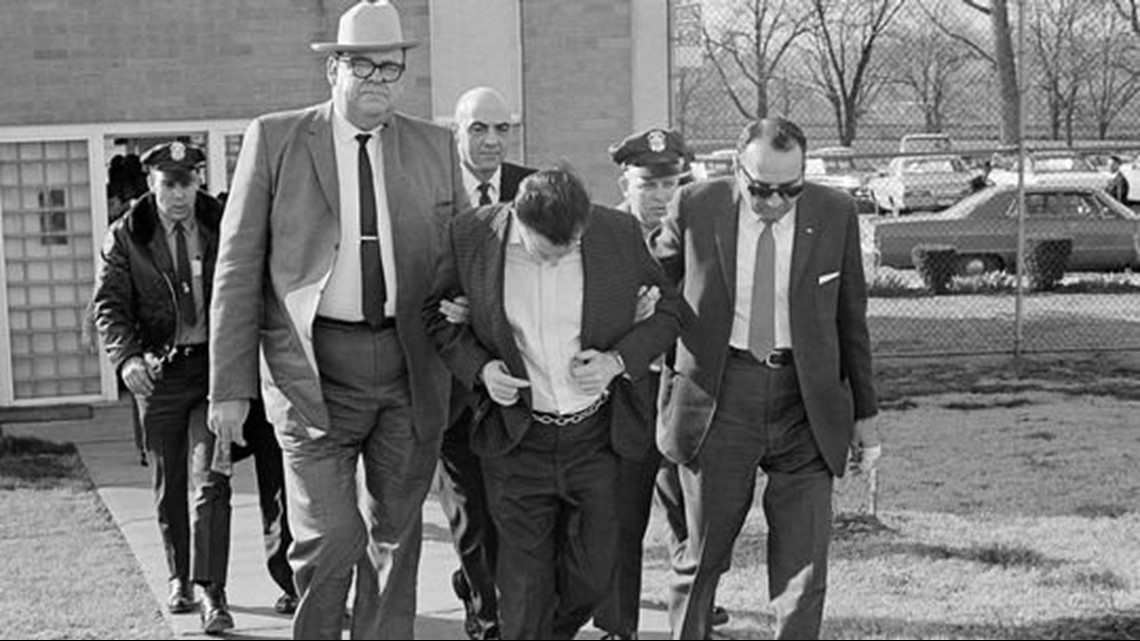
Reporters and photographers periodically visited the prison. Ray stayed in bed with the blankets pulled over his head.
He granted one interview, to News Sentinel reporter Willard Yarbrough in March 1971 – to “let people outside know that I wasn’t crazy.” The resulting “exclusive” boasted barely enough drama for a church bulletin.
“I do not cause trouble here,” Ray told him. “I work six hours a day, seven days a week. … I write memos to my lawyer … I’m in bed and asleep by 8 every night. … just another prisoner and am treated as one.”
Aborted escapes
Ray might have qualified for parole in another 32 years - in time for his 74th birthday. But he threw away his model prisoner status that May, stung by disappointment over a denied appeal, when he used a stolen hacksaw, chisel and crowbar to punch a hole in his cell wall and jimmy his way into a steam tunnel that led to the outside.
Scalding temperatures that topped 400 degrees forced him back. He might have made it if he’d waited just a few more weeks, when the steam plant would have shut down for the summer.

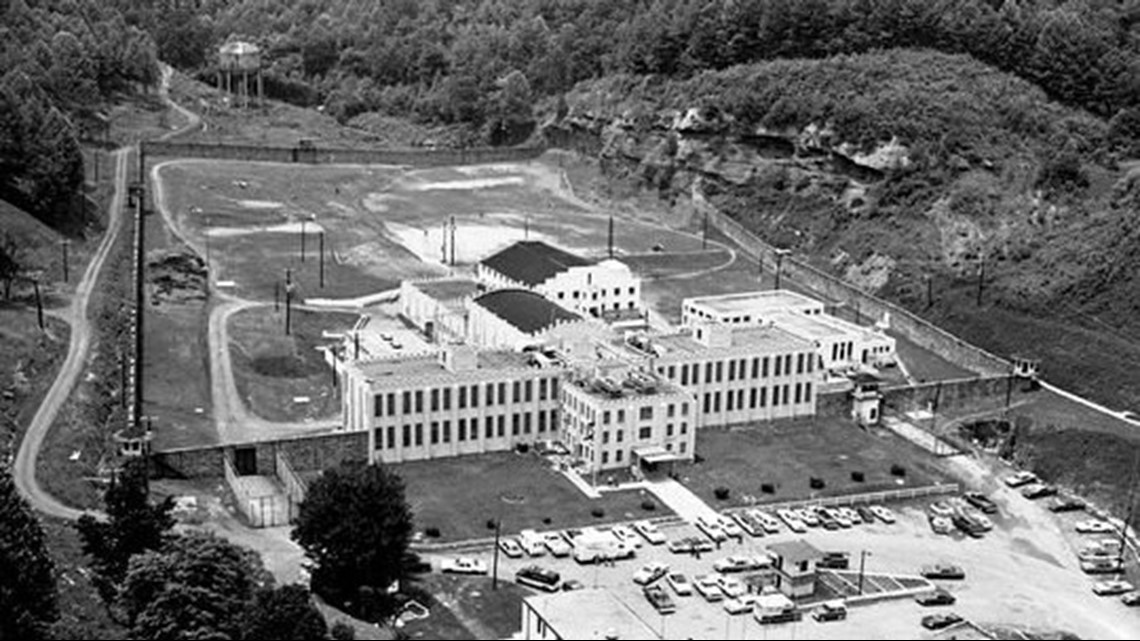
Nine months and 30 days in the hole later, he took another chance. This time Ray fashioned the saw himself and tried boring a way out through the ceiling, with no more success.
He finally left Brushy in July 1972, but not the way he wanted. An armed convoy carried Ray to the Tennessee State Prison in Nashville when Gov. Winfield Dunn ordered Brushy closed rather than recognize a union formed by guards. Four years later in August 1976 the prison reopened – renovated to serve as maximum-security housing for Tennessee’s worst offenders – and the celebrity inmate returned by his own request.

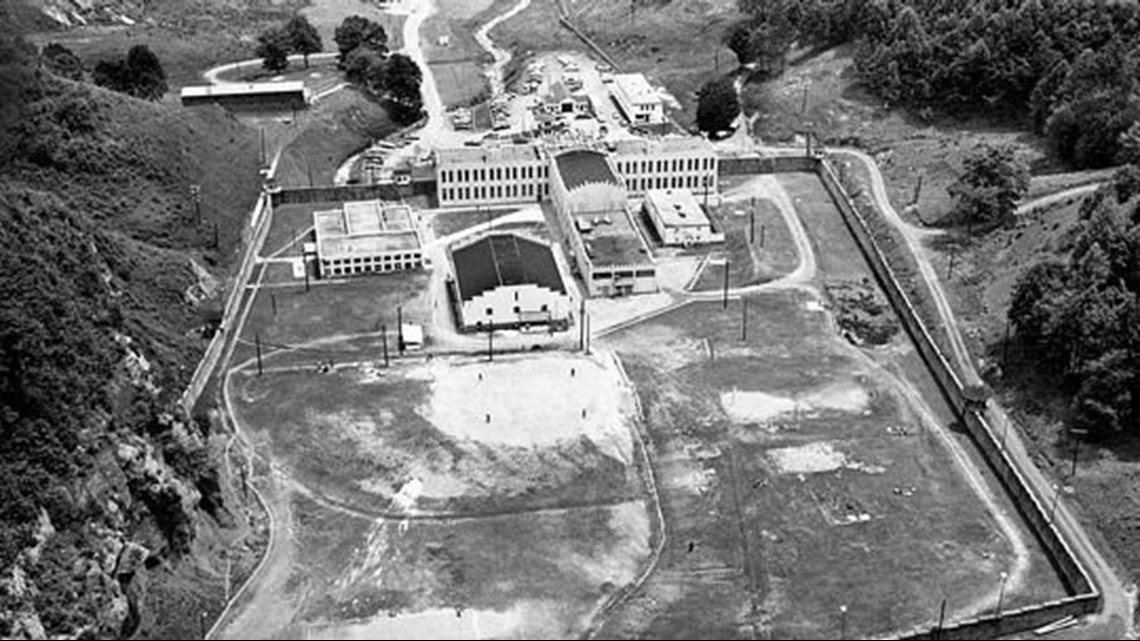
The prison at Petros - established in 1896 and built in the 1930s from stone in the shape of a Celtic cross – looked like a castle from the Dark Ages but offered fresh air and relative quiet in the shadow of the Cumberland mountains compared to the overcrowded, ill-maintained prison near downtown Nashville. Ray regained his privileged status and went to work in the laundry at Brushy, by all accounts a model inmate again.
“He probably hasn’t said 500 words to anyone since being returned here,” Warden Stonney Lane told reporters.
Back in the spotlight
By spring 1977, the national spotlight turned on Ray again.
Investigators for the House Select Committee on Assassinations, created by popular demand in the wake of Watergate and revelations of CIA and FBI misconduct to take a fresh look at the John F. Kennedy and Martin Luther King assassinations, visited Petros no fewer than four times to question Ray behind closed doors about what he claimed to know. His attorney of the hour, Jack Kershaw, held out hope the probe could lead to a new trial.

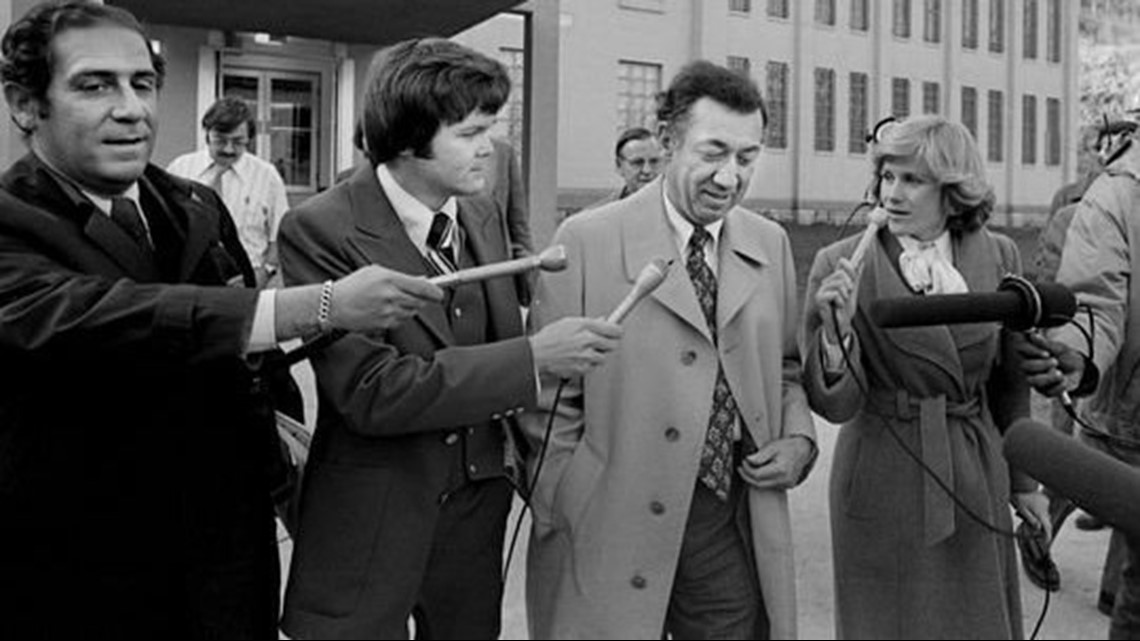
“He’s finally found a forum that will listen to his knowledge of what happened in Memphis,” Kershaw announced.
But witnesses Ray claimed could back up his story either contradicted him or failed to materialize. Congressional investigators initially wouldn’t commit to hauling the inmate to Washington to testify.
Spring turned into summer. Temperatures and tempers grew hot. Inmates grew restless.
Five men and a ladder
The sun had just started to sink in the sky as Floyd Hooks sat at his post in the guard tower along Brushy Mountain’s north wall on Friday, June 9, 1977, just before 7:30 p.m.
Below, inmates milled in the exercise yard, making the most of the last minutes before lockdown for the night.

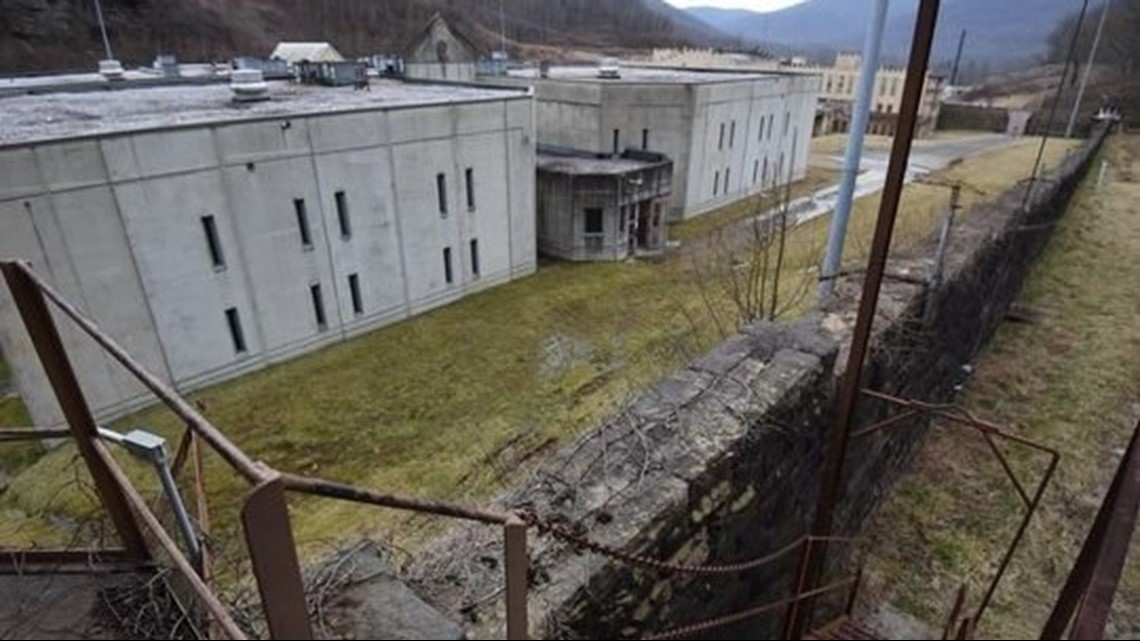
Nine towers stood along the prison’s walls. Only eight held guards. The last tower – a tacked-on wooden addition near the corner where the northeast wall met the bare rock of the mountain slope - stayed empty except during riots or other emergencies.
The wall stood 12 feet high, topped by barbed wire electrified with 2300 volts. At the spot where mountain and wall met, the wire tilted upward – leaving an 18-inch gap just big enough for a grown man to squeeze beneath. On the opposite side, 40-odd years of erosion had built up a mound of dirt that could cushion a drop.

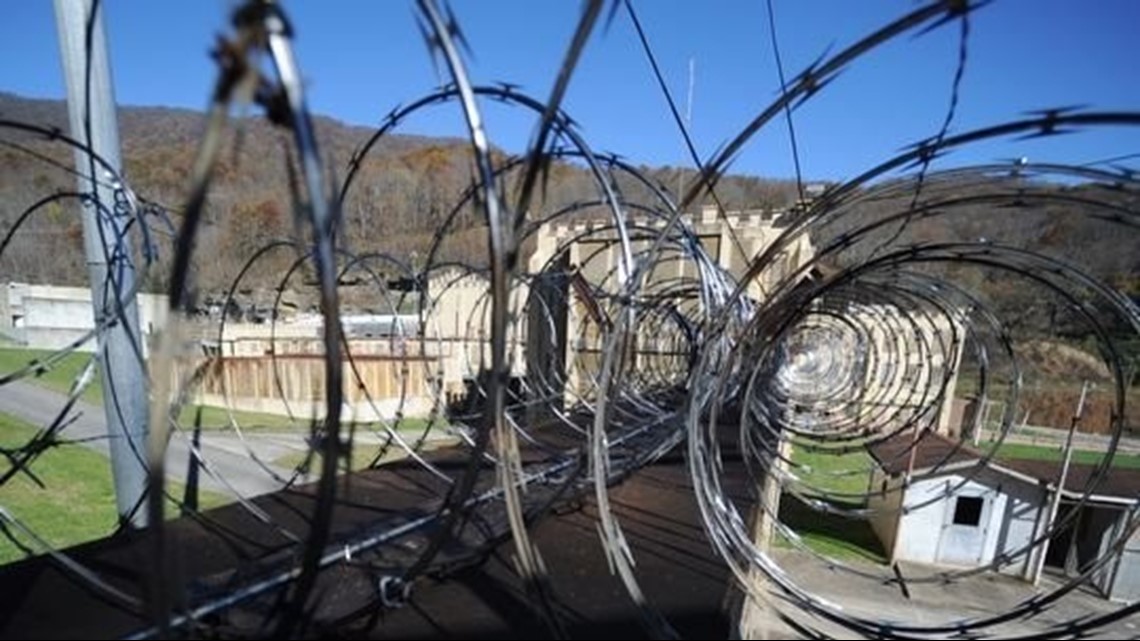
One by one, five men broke away from the basketball court, the softball diamond and the horseshoe stakes to cluster together in the shadow of the empty tower. Sweaty, shaking hands yanked pieces of pipe from under shirts, out of waistbands, from behind the rocks and clumps of dirt where they’d lain for days, smuggled from the prison machine shop to wait for this moment. Eyes darted toward the tower where Hooks sat.
Hooks’ fellow guards blame him to this day for what happened next. Prison officials accused of Hooks of sneaking in newspapers to read on his shift. Hooks insisted his gaze strayed when someone near the basketball court threw a punch and a fight broke out – all scripted well in advance.
Fists flew. Someone screamed. Sections of pipe came together into a 12-foot ladder – a flimsy contraption that looked barely sturdy enough to hold up a cat but now swung into the air and hooked over the outside edge of the northeast wall, just at the spot where the wire ended.

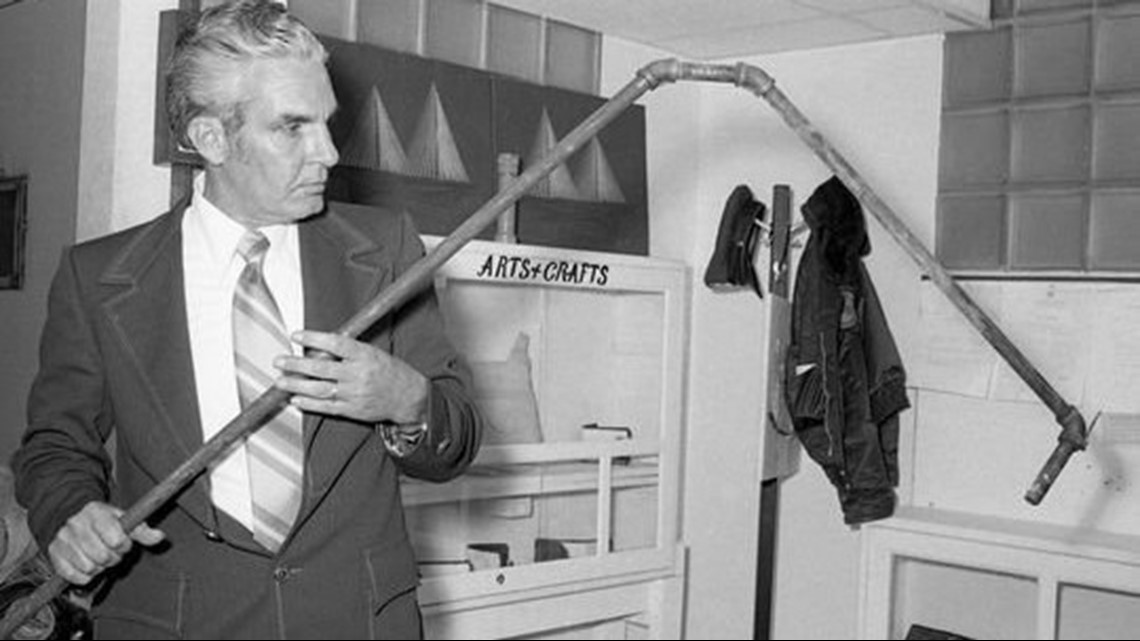
‘Over the wall’
James Earl Ray scrambled up and over first. The rest followed – Larry Edward Hacker, a convicted bank robber from West Tennessee’s Hardin County; Earl Hill Jr., serving two life sentences for rape and murder outside Erwin, Tenn.; Donald Ray Caylor, a Knoxville convict serving time for armed robbery and attempted murder; Doug Shelton, a killer from Kingsport with a long record of escaping from jails and prisons. Each ran from the moment he hit the ground.
David Lee Powell, a fellow killer from Shelby County on a 99-year sentence, looked out the window of the prison dining room as he helped clean up from supper and saw the five climbing over the top. He ran downstairs and out the door in time to reach the ladder just as the last man scampered up. On his heels came Jerry Ward, a bank robber from Shelby County who decided to join in, too.

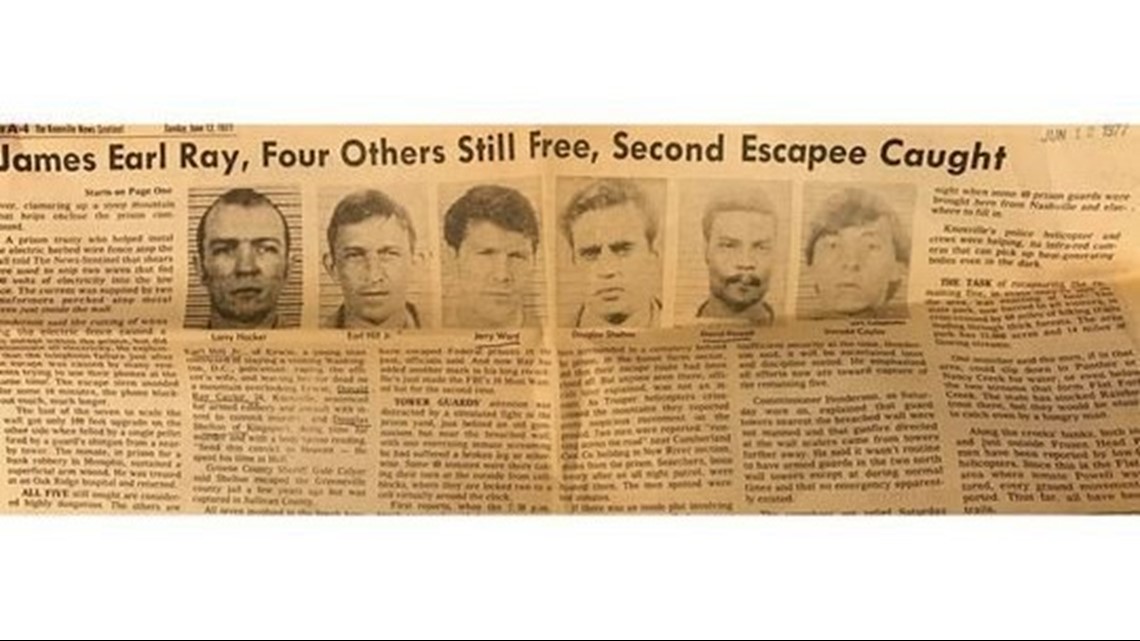
The setting sun struck Powell’s white kitchen uniform as he dashed across the yard. The glare caught the eye of Lynnwood Butler, on duty in a guard tower on the opposite wall. He cocked his shotgun and opened fire. Cheers from the other inmates filled the air: “Over the wall! Over the wall!”
Hooks, the nearest guard to the escape point, never got off a shot. He later testified he tripped over his rifle, fell against the tower door and locked himself inside.

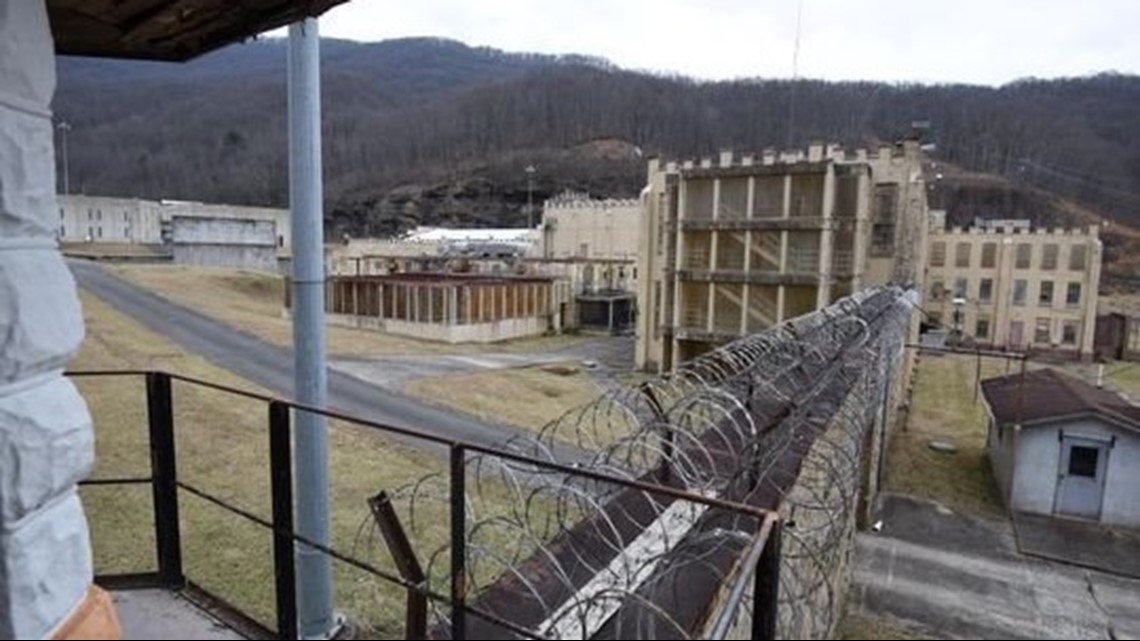
One of Butler’s shots caught Ward, the last man up the ladder, as he crossed the wall. Ward tumbled to the ground, bleeding from his head and arm.
Guards caught up with him minutes later. Ward left the prison grounds in an ambulance, shouting all the way: “James Earl Ray got out! James Earl Ray got out!”
The eyes of the world
Men, women and children across the valley heard the steam whistles blow that night – six times, once for each escaped inmate.
The inmates’ timing couldn’t have been better. Stonney Lane, the warden, had left town to visit his sister in Texas. So many callers, inside and outside the prison walls, started dialing on phones at the same time the whole system for Morgan County crashed.


"I had run off my mouth before to anybody who asked me that I'd hate to be the warden that lost him," Lane said later. "Then all of a sudden there I was."
Ray Tucker, the prison’s recreation director, heard the whistle from his house and headed into the compound. There he met the deputy warden, Clay Davis, and found himself drafted to serve as acting spokesman for the prison.
Reporters, photographers and cameramen showed up at the gates soon after – everyone from the local Morgan County News and the Knoxville News-Sentinel to the New York Times and the BBC.
“There were people there from England, Germany, Australia,” Tucker recalled. “He sent me out there to deal with them.”

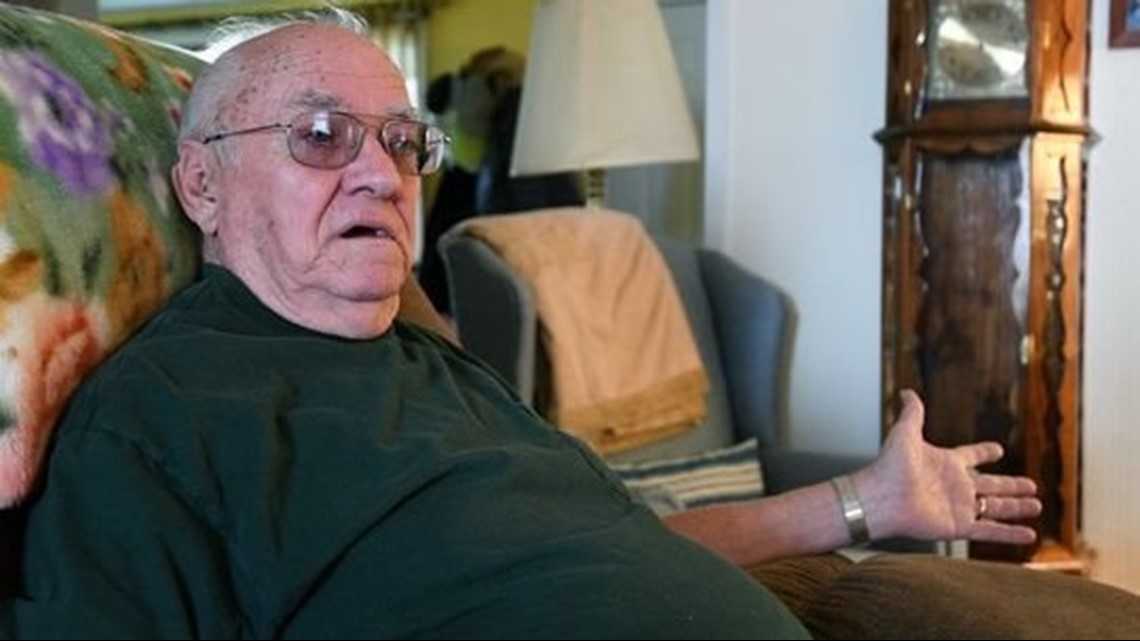
The questions came fast and heavy. How did the escape happen? Did anyone help from the outside? Why wasn’t the nearest guard tower manned? What were the guards doing in the time it took seven men to swarm over a wall that should have been impregnable? Why was a high-profile prisoner like Ray doing mixed with the general prison population? And could the whole escape be an elaborate plot to spirit Ray out of the country or silence him for good?
“If I knew the answer, I told them,” Tucker said. “And if I didn’t know, I said so.”
President Jimmy Carter ordered the FBI to step in and take over the manhunt. Gov. Ray Blanton – who would resign two years later and head to prison himself for selling pardons – insisted the state could find Ray just fine on its own.
U.S. Rep. Louis Stokes, chairman of the House Assassinations Committee, hinted Ray might have had help from inside and outside.

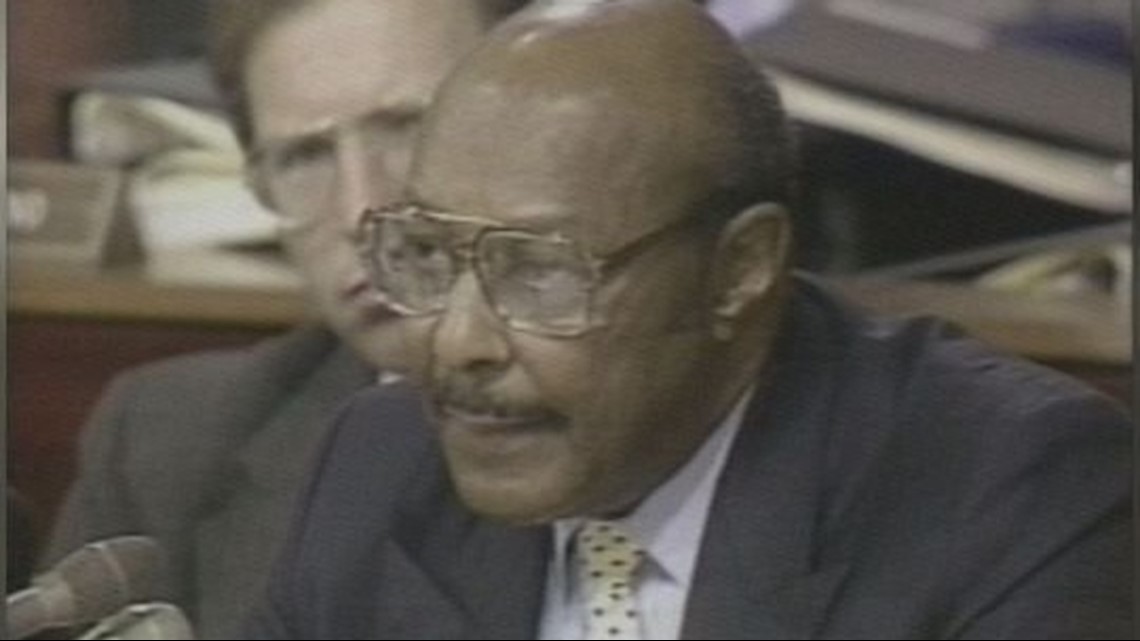
“How does America’s most famous prisoner in that maximum-security prison, second possibly only to Alcatraz, escape so easily?” the chairman demanded. “Our only hope now is that he can be captured before he is conveniently killed.”
‘Here, there and everywhere’
Guards, sheriff’s deputies, state troopers and officers from every city and county within 100 miles poured into Petros to blockade the roads and help with the search. Helicopters canvassed the skies. Johnny Newberry reported for duty and went to work with the dog teams.

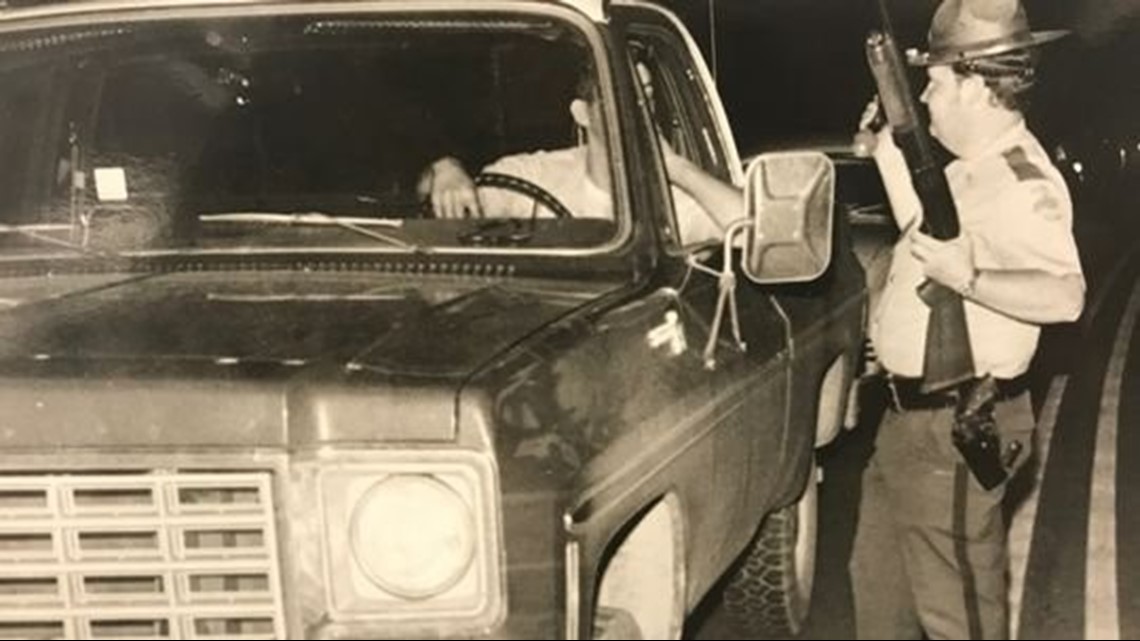
The hounds trained year-round for nights like this one. Guards and trustees took them out for coon hunts and runs through the mountains to teach the dogs and each other every twist and turn of the trails.
But Newberry remembers the first few days of the manhunt as a hydra-headed squabble of bosses barking contradictory orders, more concerned about their own agencies’ importance than catching the fugitives. Exhausted guards like Newberry and partner Sammy Chapman ducked their heads and tried to do their jobs in spite of the turf wars. Those jobs got harder as the hunt wore on.
“We were all of us up three days and two nights – here, there and everywhere,” Newberry said. “Every time we’d go out, Sammy had Sandy and I had Little Red.”

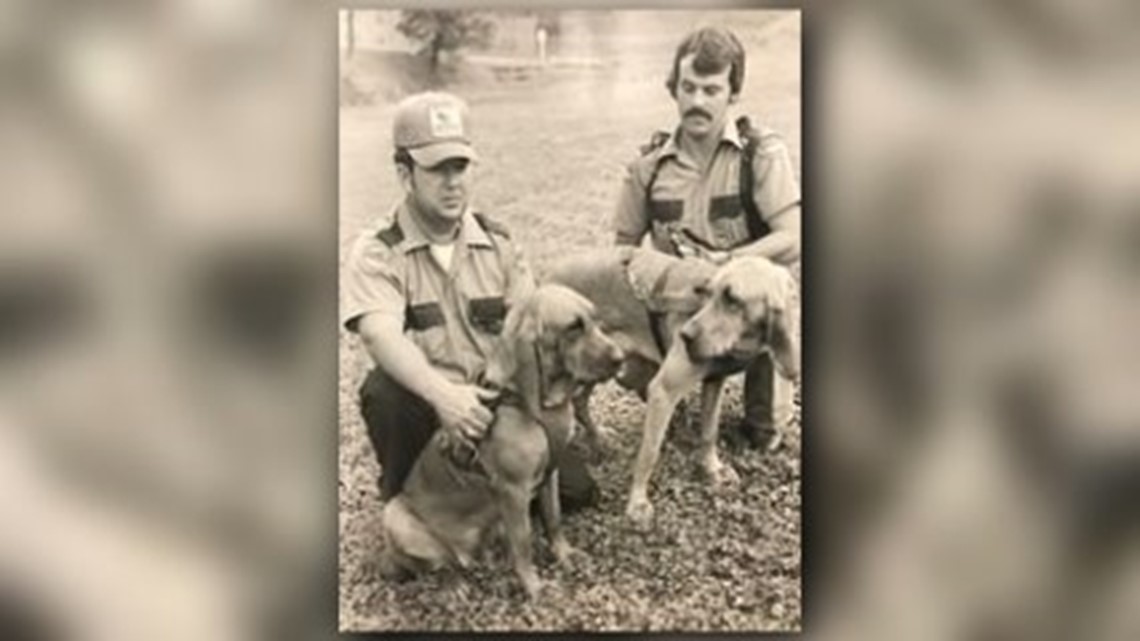
He remembers a few details that he insists never got a clear answer – of a helicopter that flew over the first morning that no agency ever claimed and that hovered over a single spot as if waiting for someone, of occasional radio interference that couldn’t be explained.
The second of the fugitives, David Powell, gave himself up 42 hours into the search. David Powell, the kitchen helper who caught the urge to run, raised his hands and gave himself up that Saturday afternoon after a police helicopter spotted him in an open field off state Highway 62 near Frozen Head State Park. He swore he didn’t know about the escape plot and said he had no idea where to find Ray and the others.
Sunday morning brought another capture – Larry Hacker, found kneeling inside a one-room church 4 miles from the prison in the New River community across the Anderson County line. Hacker later told guards he picked the church not as a hiding spot but a sanctuary. He figured trigger-happy hunters wouldn’t kill him there.

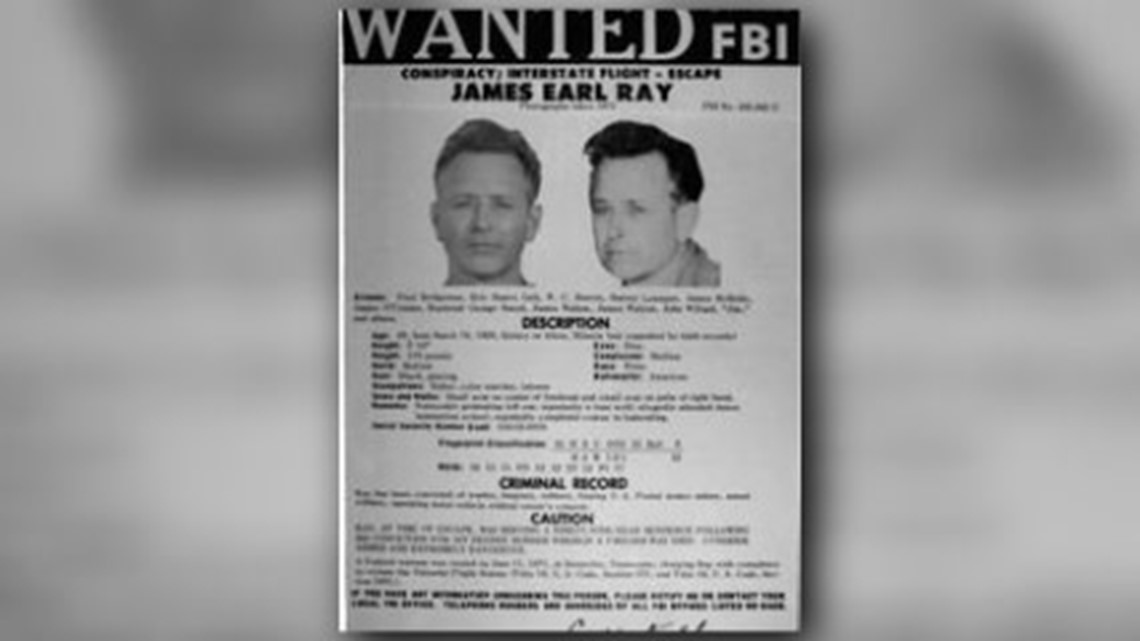
Sunday afternoon brought a summer thunderstorm that put a stop to search efforts. The rain turned out to be the best friend the searchers could ask for.
“Damp ground holds the scent longer,” Newberry said. “So the wetter, the better.”
Around 10:30 p.m., a search team caught up with Earl Hill on a hillside not far from the church in New River near state Highway 116. He gave himself up and asked politely for a cigarette.
Sniffing out ‘Shiloh’
A New River resident had called to report seeing three strangers traveling in the dark. One matched Ray’s description. Searchers suspected the men must have split up when they reached the highway.
Dog teams had already been through the area. But they’d been outside dog teams, handled by guards from West Tennessee who didn’t know the mountains.
Lane, the warden, called over the radio for Newberry and Chapman to bring Sandy and Little Red.
Back at the prison, Tucker took over as radio operator. His ears pricked up when he heard the word “Shiloh” – the codename searchers had given to Ray.
Others heard the word, too. The dog team arrived at a highway swarming with agents, officers, state troopers and their egos.
All the commotion made the dogs nervous. The crackle of radios, the glare of the lights, the coming and the going in the dark made the bloodhounds stop short.
“I told the warden what the problem was,” Newberry recalled. “We needed to clear the radio and pull everybody back. He said, ‘All right. Let’s hold up and see what they can do.’ ”

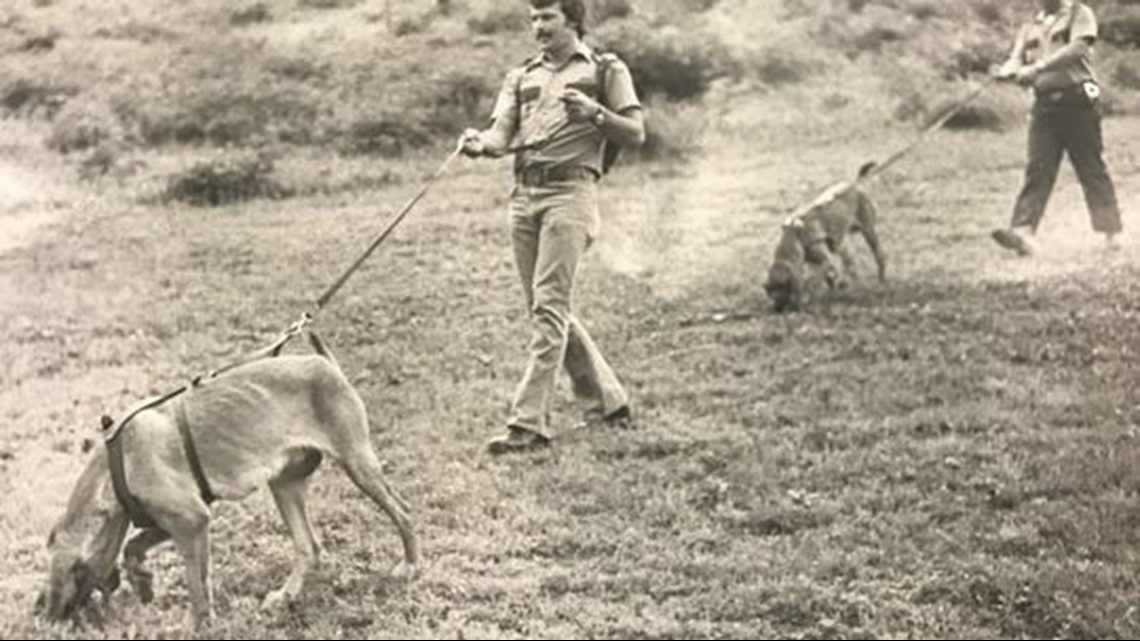
Sandy and Little Red snuffled and sniffed. The men at their leashes watched and waited.
You’re wasting your time, one federal agent shouted. “There’s nobody out here.”
The dogs didn’t listen.
“We hadn’t gone 40-50 yards when Little Red turned,” Newberry said. “We didn’t know which one it was, but we had a scent, and off we went.”
On the track
Across the railroad track, through the river, up the mountain, into the briars and brush, the dogs led on. One hour turned into two, then three. They crossed an old logging road into more woods.
The dogs made little noise, their path lit only by the handlers’ headlamps.
“Bloodhounds don’t bark or howl when they’re on the track,” Newberry said. “That’s just in the movies.”
Around 2 a.m., Sandy came to a stop, Little Red behind her. A shadowy form lay still under the leaves.
James Earl Ray crawled to his feet, to be led down the hill to the road where the warden waited. He had a little more than $100 cash in his pockets and a piece of a map.

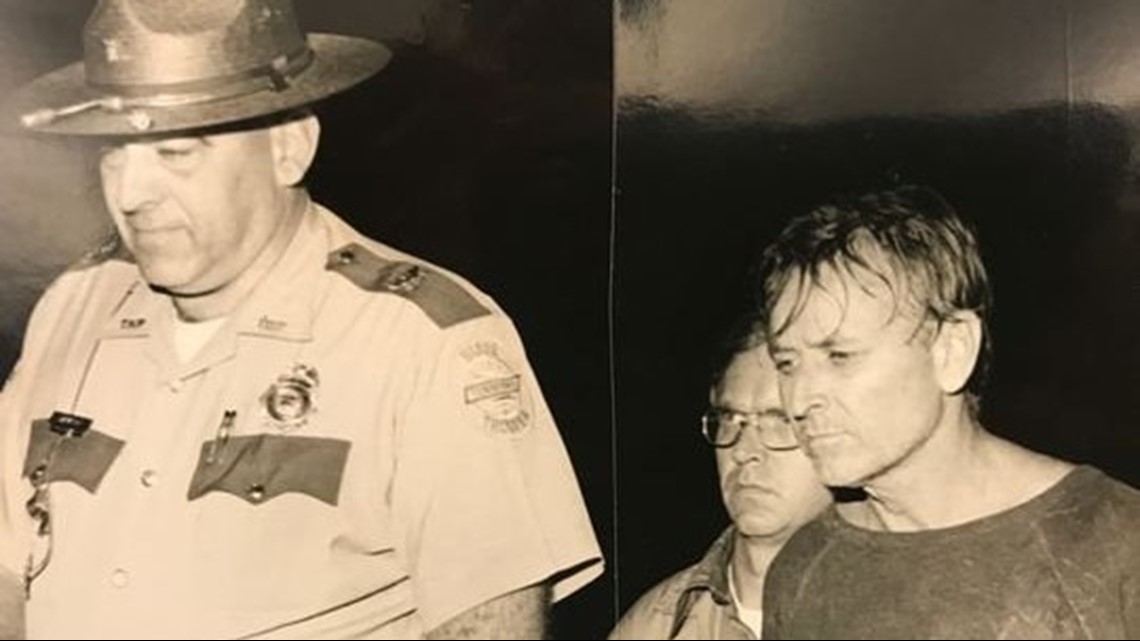
The words crackled over the radio: “Shiloh, Shiloh, Shiloh! We caught Shiloh!”
“You could hear the relief in everybody’s voices,” said Tucker, still listening at the radio console.
Lane and Col. Richard Dawson, commander of the Tennessee Highway Patrol, marched a handcuffed Ray past the cameras through the prison gates. The kitchen steward reported he asked for two breakfasts – sausage, ham, eggs, fried apples, biscuits with gravy, and three cartons of milk – the first meal he’d eaten since crossing the wall. He headed from there to solitary confinement.
“How do you feel?” the warden asked.
“I feel good,” came the reply.
The gates close
With Ray’s recapture, the world’s attention faded. Media crews camped outside the prison gates started packing up moments after his return to solitary confinement.
Searchers rounded up the rest of the fugitives in the days that followed. A Morgan County jury that fall convicted all seven in the escape.

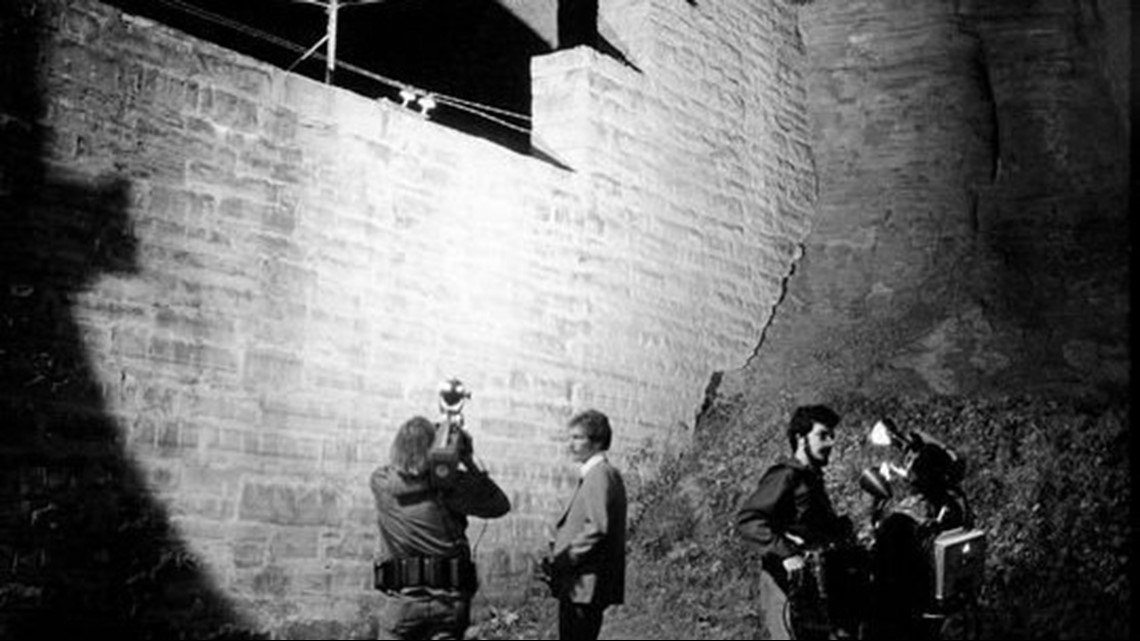
Ray testified at the trial he’d hoped to make his way to Canada and hide out there until he could win a new hearing in King's death. He never got that trial, although he made the trip to Washington to testify before the House Assassinations Committee. The committee's final report termed that testimony "evasive and illogical."
In October 1978, Ray married Anna Sandhu, a courtroom artist who sketched his image during the escape trial. Prison officials granted them an hour for a ceremony and reception in the visitors gallery. The warden allowed flowers and cake – but no photos beyond a few Polaroid shots.

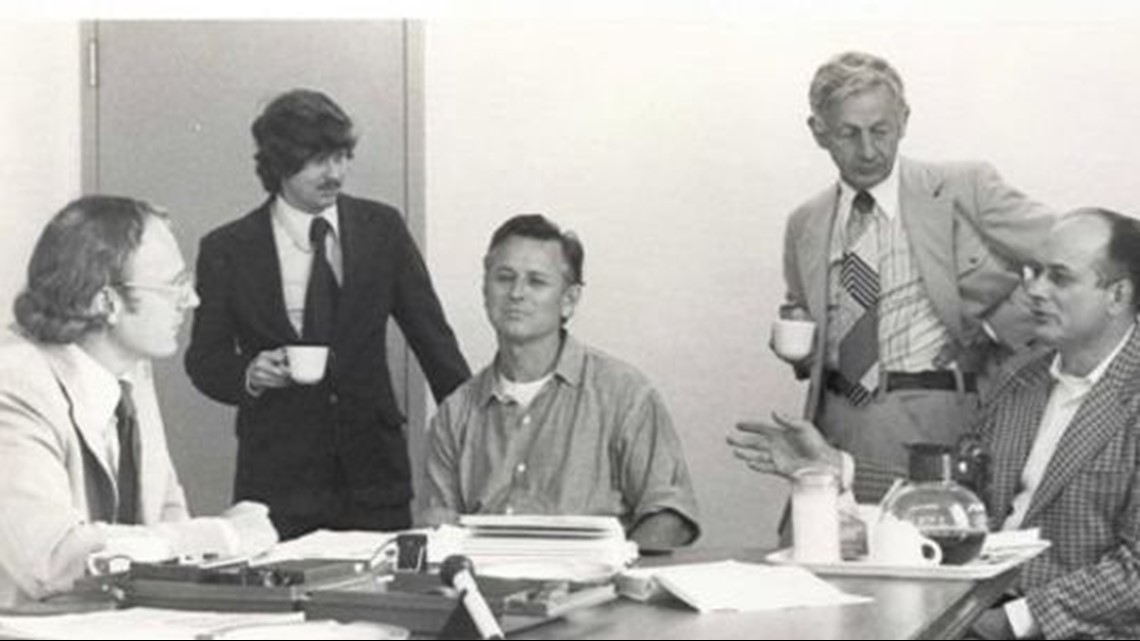
Ray made one more escape try in November 1979, when a guard caught him crawling along the prison wall under a green blanket in the dark. He made headlines again from a hospital bed in June 1981, when four fellow inmates – three black and one white – stabbed him 22 times in the prison library with a shank fashioned from a window frame.
Claiborne County Sheriff David Ray, then a Tennessee Bureau of Investigation agent, questioned Ray after the stabbing. He’d interviewed Ray before, talked with him in the prison yard and helped with the hunt during the 1977 escape.


He believes to this day Ray engineered the stabbing in another bid for publicity.
“He never told me anything,” the sheriff recalled. “I never found him to be talkative. He was always quiet, always kept to himself, never volunteered anything. But if those other inmates had wanted to kill him, they would have. I think he planned the whole thing to try to get a new trial. He was never really smart, so much as he was cunning – always looking for an opportunity.”

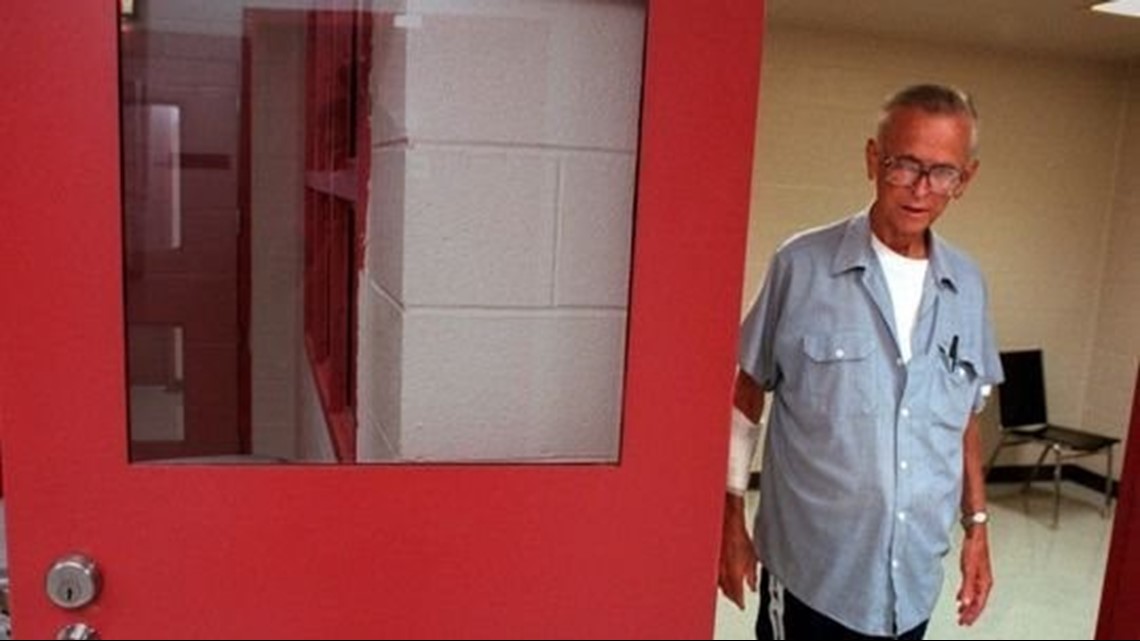
If he knew more than he told about King’s assassination, Ray took it with him to the grave when he died April 24, 1998, at age 70 of hepatitis contracted from a blood transfusion after the stabbing. Family members had his body cremated, the ashes to be scattered in Ireland – 4,000 miles across the ocean from the East Tennessee prison he could never quite escape.
►Make it easy to keep up to date with more stories like this. Download the WZZM 13 app now.
Have a news tip? Email news@wzzm13.com, visit our Facebook page or Twitter.


